RAG Week is a rite of passage for many third-level students across the country, generally involving partying in the name of charity a number of nights in a row.
Colm O’Gara is a 20-year-old computer science student in IT Sligo and when it came to this year’s RAG Week, the Mayo man had his priorities straight.
“During RAG Week I only went out once. I was more interested in going to Patrick Feeney’s dancing weekend the Friday, Saturday, Sunday.”
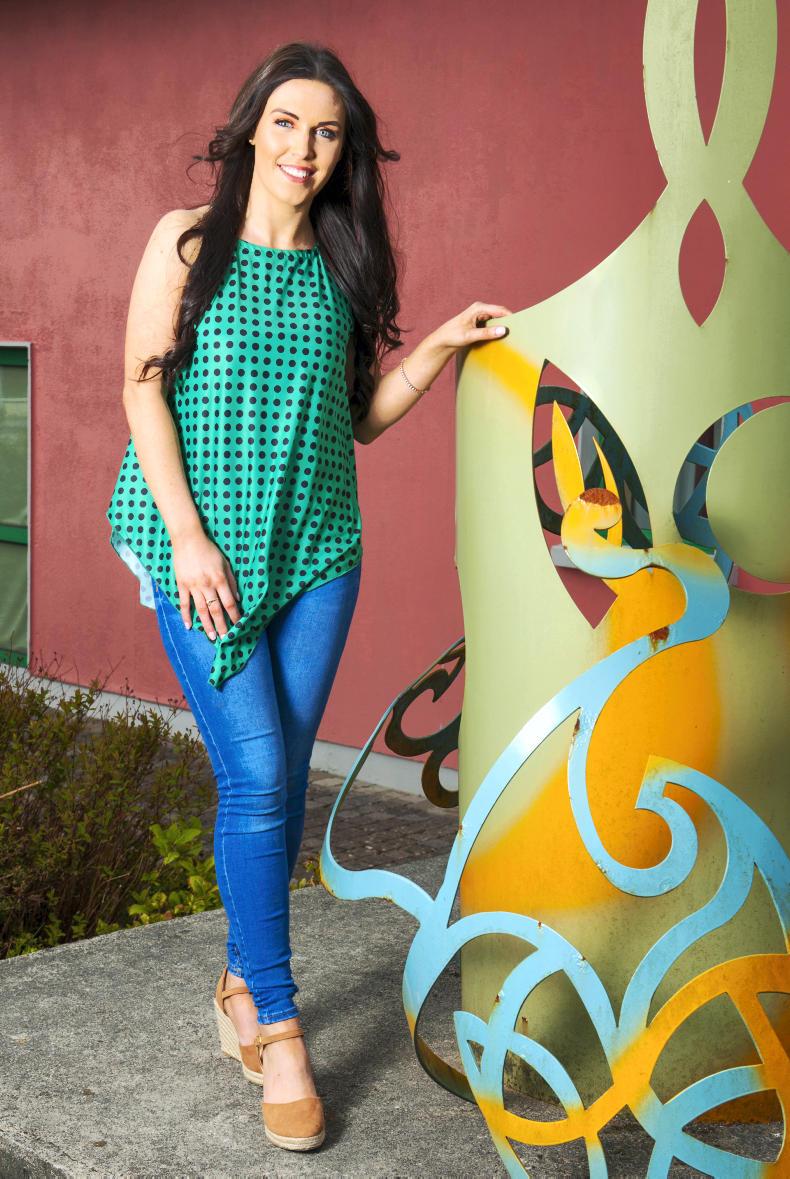
Sandra Ganley, Jiving Juniors Dance School. \ Michael Mc Laughlin
This may seem unusual to some, but for those acquainted with Ireland’s social dancing scene, it makes perfect sense.
To delve into the world of social dancing and to record some tutorial videos, Irish Country Living meets with a selection of young dancers; Sandra Ganley of Jiving Juniors Dance School, Colm and their Jiving Junior assistants, Ava Horgan and Natasha Sharkey.
Stigma and the scene
Strongly linked to country music in Ireland, social dancing is an umbrella term for five different dances; jive, line dance, waltz, quickstep and foxtrot.
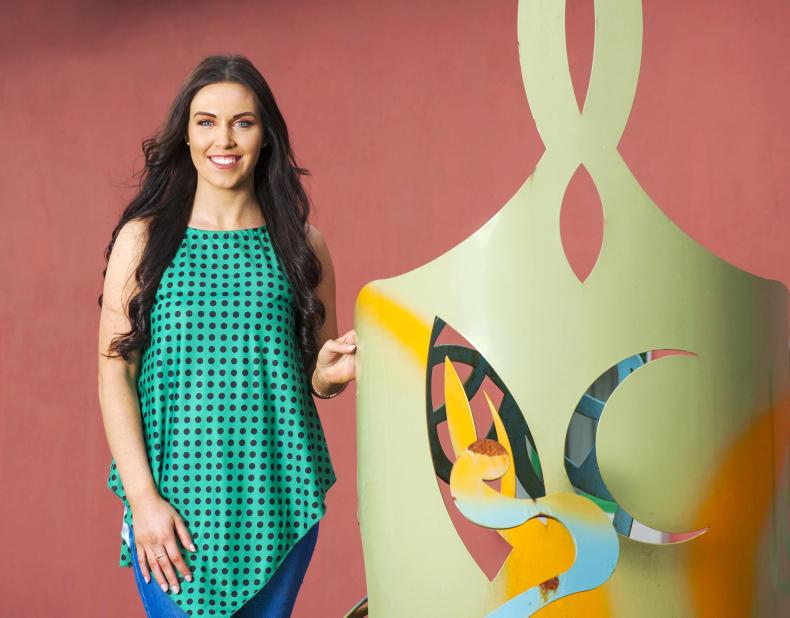
Of these, the fast-paced jive is undoubtedly the most popular here, with line dancing coming in second.
On this island therefore, most social dancers are jivers, known for being passionate and dedicated dance followers. Colm informs us that last weekend was the first weekend he hadn’t gone dancing in 18 months.
Despite a boost in its reputation among the general public in recent years, Colm still notices a slight stigma attached to jiving.
“If people are not brought up in rural Ireland or they live more towards the town, it would be “uncool”. But people in rural Ireland, if they see young people out dancing, they think, ‘I want to be able to dance like that person.’ For a lot of people there’s a stigma until they go to a dance and see the young people dancing, then they are actually like, ‘Oh wow, there’s a different side to this’.”
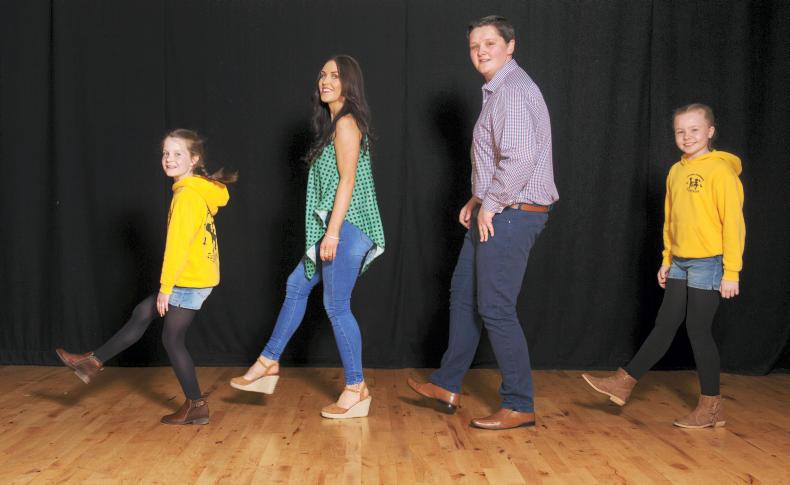
Natasha Sharkey, Sandra Ganley, Colm O'Gara and Ava Horgan. \ Michael Mc Laughlin
Previously there was a perception that social dancing was for the older generation, but RTÉ’s Stetsons and Stilettos series blew the lid on this thriving subculture for both young and old.
When we say young, we don’t just mean those in their 20s and 30s. Sandra, 26, from Co Mayo, runs Jiving Juniors, a social dancing school for children from the age of three right up through their teens.
The spare shirt
Jiving Juniors is the only social dance school in the country solely for children. Before establishing the school three years ago, Sandra completed a BA in music and dance, followed by a post-grad in primary education, working as a school teacher before moving to dance teaching full time.
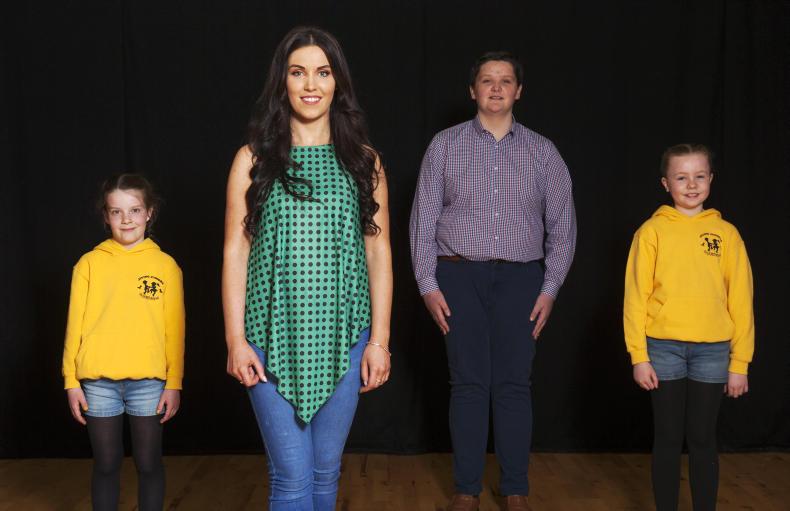
Like Colm, Sandra – who was the 2017 Mayo Rose – has always been a fan of social dances. “You go good and early, because you want to get a good parking space.
“You wear the heels, but you bring the comfy shoes. You can’t just wear the comfy shoes in, you have to wear the heels in and then bring the comfy shoes to change into. You have to get in early, because you want to get the good seats, there’s just a perfect seat in every venue,” she says.
“It’s non-stop dancing, the sweat is serious. Lads would often have the two or three shirts and the towel. The girls would be lacing the deodorant on. You don’t even bother putting in as much of an effort anymore. You wear your hair down and within five minutes you have it thrown up.”
Colm concurs that multiple shirts hanging in the back of cars is a feature of a social dance. “I’d bring two or three spare shirts every night. If there are two bands I would go to about three spare shirts, two definitely anyway.”
On the road again
Devoted jivers have no problem travelling far and wide to dances. Drinking is less of a focus, there’s no time, because everyone is dancing. However, the lack of alcohol doesn’t stop people staying out all night, explains Sandra.
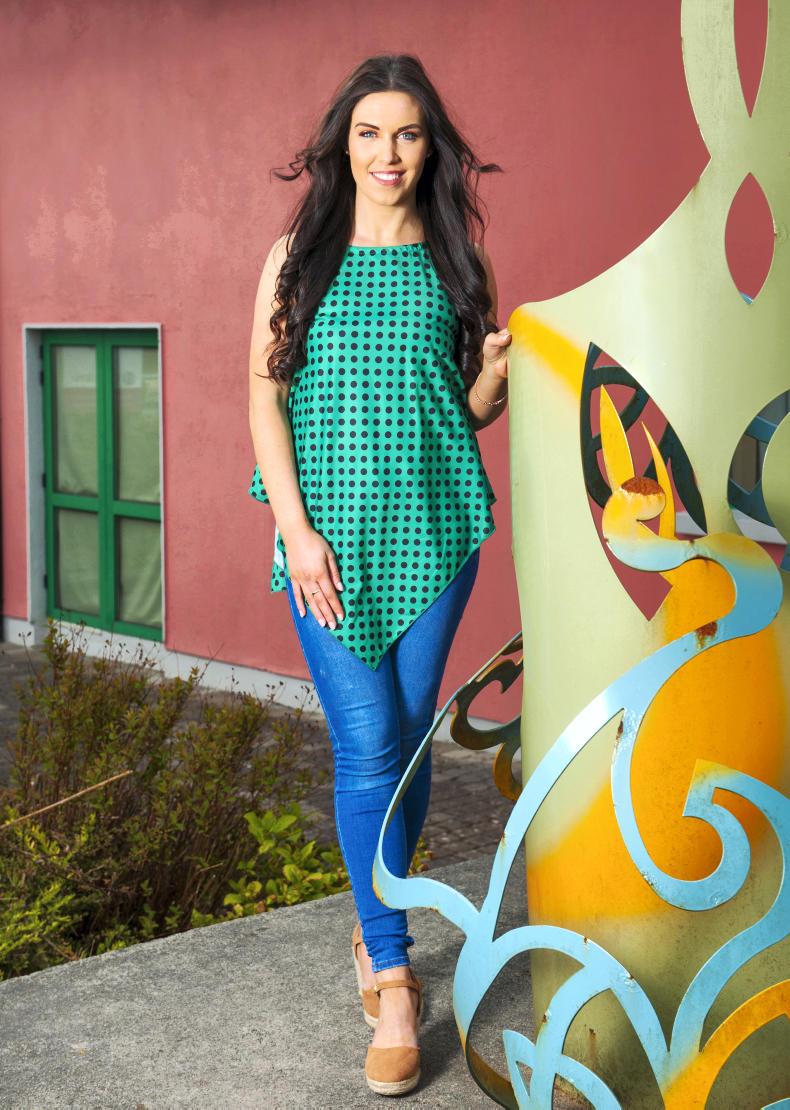
Sandra Ganley, Jiving Juniors Dance School. \ Michael Mc Laughlin
“During the winter you’d travel up to two hours max maybe; Claremorris, Bundoran, Moate. But in the summer, when there’s no college, there’s no school, there’s no work, it changes. There are festivals on, you mightn’t be home until four or five in the morning.”
Geographically, there are said to be differences in the style of jiving.
“People say it gets faster the more you go up north. Which is kind of true,” explains Sandra.
“The moves don’t change, but what happens is they get higher as you go up the country. So what I mean by that is, we stay low, but when you go up to the north they’d be seriously hopping. If you’re dancing with a fella who’s hopping and skipping, you have to go with it.”
Both Sandra and Colm are shocked to hear this writer not alone has never been to a dance, but can’t jive, and wastes no time in teaching the necessary moves. Despite two left feet, I almost have the basics down before leaving.
The social side
Having competed in Irish dancing up to the age of 21, Sandra knows the pressures associated with competitive dancing. It’s the craic surrounding social dancing that drew her towards teaching it.
Often, she goes to dances on her own, because someone will always ask you out on the floor. “You could be in the door five minutes and it’s as simple as this…”
Sandra bounds out of her seat, looks at me, throws her thumb back over her shoulder and tilts her head towards the dance floor.

Sandra Ganley, Jiving Juniors Dance School. \ Michael Mc Laughlin
“And there’s no talk, it’s not a, ‘do you want to dance?’ You nod and off you go. I mightn’t even know him.”
What really highlights the fun element of social dancing to Colm is the lack of phone use. “Nobody is on their phone at a dance, very few people would have a phone out. They would take a picture for their Snapchat story or whatever, but that would be it. The phones would be away, because you’d be dancing.”
Ultimately, it seems the message is in the name; social dancing. In an era where it’s often levelled that as a society we are becoming increasingly unsociable, a jive may just be the perfect antidote.
Read more
Dancing queen
Keeping it Klassy in Cahir
RAG Week is a rite of passage for many third-level students across the country, generally involving partying in the name of charity a number of nights in a row.
Colm O’Gara is a 20-year-old computer science student in IT Sligo and when it came to this year’s RAG Week, the Mayo man had his priorities straight.
“During RAG Week I only went out once. I was more interested in going to Patrick Feeney’s dancing weekend the Friday, Saturday, Sunday.”

Sandra Ganley, Jiving Juniors Dance School. \ Michael Mc Laughlin
This may seem unusual to some, but for those acquainted with Ireland’s social dancing scene, it makes perfect sense.
To delve into the world of social dancing and to record some tutorial videos, Irish Country Living meets with a selection of young dancers; Sandra Ganley of Jiving Juniors Dance School, Colm and their Jiving Junior assistants, Ava Horgan and Natasha Sharkey.
Stigma and the scene
Strongly linked to country music in Ireland, social dancing is an umbrella term for five different dances; jive, line dance, waltz, quickstep and foxtrot.

Of these, the fast-paced jive is undoubtedly the most popular here, with line dancing coming in second.
On this island therefore, most social dancers are jivers, known for being passionate and dedicated dance followers. Colm informs us that last weekend was the first weekend he hadn’t gone dancing in 18 months.
Despite a boost in its reputation among the general public in recent years, Colm still notices a slight stigma attached to jiving.
“If people are not brought up in rural Ireland or they live more towards the town, it would be “uncool”. But people in rural Ireland, if they see young people out dancing, they think, ‘I want to be able to dance like that person.’ For a lot of people there’s a stigma until they go to a dance and see the young people dancing, then they are actually like, ‘Oh wow, there’s a different side to this’.”

Natasha Sharkey, Sandra Ganley, Colm O'Gara and Ava Horgan. \ Michael Mc Laughlin
Previously there was a perception that social dancing was for the older generation, but RTÉ’s Stetsons and Stilettos series blew the lid on this thriving subculture for both young and old.
When we say young, we don’t just mean those in their 20s and 30s. Sandra, 26, from Co Mayo, runs Jiving Juniors, a social dancing school for children from the age of three right up through their teens.
The spare shirt
Jiving Juniors is the only social dance school in the country solely for children. Before establishing the school three years ago, Sandra completed a BA in music and dance, followed by a post-grad in primary education, working as a school teacher before moving to dance teaching full time.

Like Colm, Sandra – who was the 2017 Mayo Rose – has always been a fan of social dances. “You go good and early, because you want to get a good parking space.
“You wear the heels, but you bring the comfy shoes. You can’t just wear the comfy shoes in, you have to wear the heels in and then bring the comfy shoes to change into. You have to get in early, because you want to get the good seats, there’s just a perfect seat in every venue,” she says.
“It’s non-stop dancing, the sweat is serious. Lads would often have the two or three shirts and the towel. The girls would be lacing the deodorant on. You don’t even bother putting in as much of an effort anymore. You wear your hair down and within five minutes you have it thrown up.”
Colm concurs that multiple shirts hanging in the back of cars is a feature of a social dance. “I’d bring two or three spare shirts every night. If there are two bands I would go to about three spare shirts, two definitely anyway.”
On the road again
Devoted jivers have no problem travelling far and wide to dances. Drinking is less of a focus, there’s no time, because everyone is dancing. However, the lack of alcohol doesn’t stop people staying out all night, explains Sandra.

Sandra Ganley, Jiving Juniors Dance School. \ Michael Mc Laughlin
“During the winter you’d travel up to two hours max maybe; Claremorris, Bundoran, Moate. But in the summer, when there’s no college, there’s no school, there’s no work, it changes. There are festivals on, you mightn’t be home until four or five in the morning.”
Geographically, there are said to be differences in the style of jiving.
“People say it gets faster the more you go up north. Which is kind of true,” explains Sandra.
“The moves don’t change, but what happens is they get higher as you go up the country. So what I mean by that is, we stay low, but when you go up to the north they’d be seriously hopping. If you’re dancing with a fella who’s hopping and skipping, you have to go with it.”
Both Sandra and Colm are shocked to hear this writer not alone has never been to a dance, but can’t jive, and wastes no time in teaching the necessary moves. Despite two left feet, I almost have the basics down before leaving.
The social side
Having competed in Irish dancing up to the age of 21, Sandra knows the pressures associated with competitive dancing. It’s the craic surrounding social dancing that drew her towards teaching it.
Often, she goes to dances on her own, because someone will always ask you out on the floor. “You could be in the door five minutes and it’s as simple as this…”
Sandra bounds out of her seat, looks at me, throws her thumb back over her shoulder and tilts her head towards the dance floor.

Sandra Ganley, Jiving Juniors Dance School. \ Michael Mc Laughlin
“And there’s no talk, it’s not a, ‘do you want to dance?’ You nod and off you go. I mightn’t even know him.”
What really highlights the fun element of social dancing to Colm is the lack of phone use. “Nobody is on their phone at a dance, very few people would have a phone out. They would take a picture for their Snapchat story or whatever, but that would be it. The phones would be away, because you’d be dancing.”
Ultimately, it seems the message is in the name; social dancing. In an era where it’s often levelled that as a society we are becoming increasingly unsociable, a jive may just be the perfect antidote.
Read more
Dancing queen
Keeping it Klassy in Cahir












 This is a subscriber-only article
This is a subscriber-only article










SHARING OPTIONS: